Art & Exhibitions
The Unmissable Highlights of Christine Macel’s 2017 Venice Biennale
"Viva Arte Viva" eschews epic overtures for intimate detail, but its most powerful moments linger in the memory.
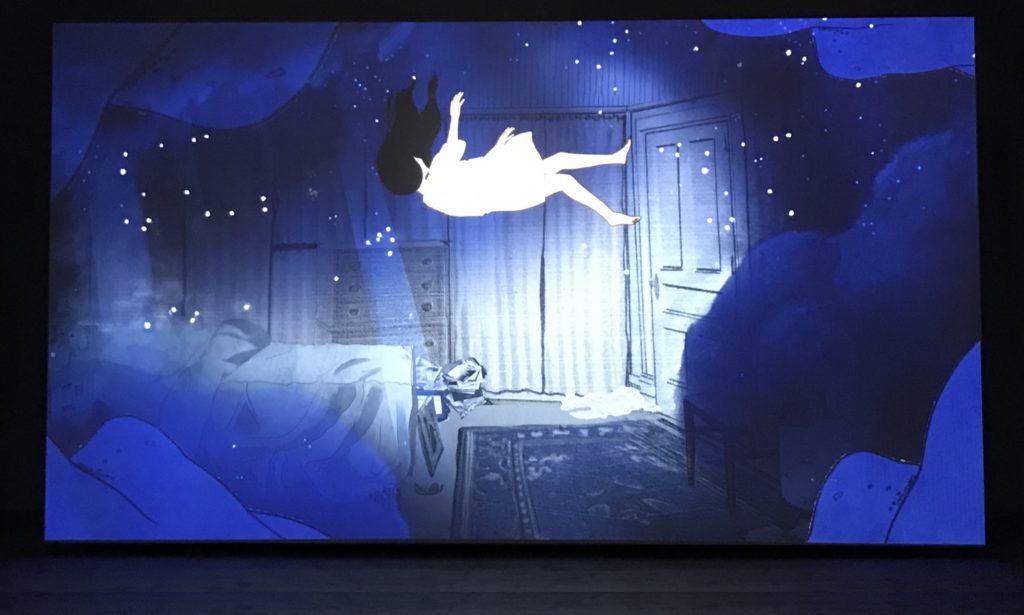
"Viva Arte Viva" eschews epic overtures for intimate detail, but its most powerful moments linger in the memory.

Andrew Goldstein

The curator Christine Macel titled her 2017 Venice Biennale “Viva Arte Viva” as a way of illustrating her intention to place art in the middle of life—see what she did there?—and walking through the show you can start to see what, exactly, she means by that. This is not so much the capital-L Life of childbirth, sex, death, and what comes next; Macel’s show is geared more to the lowercase-l life of going to work in the morning, noting ephemeral glimpses of beauty in the world around us, collaborating on worthwhile things, getting a little crazy after work perhaps, and then doing some light housework before going to bed.
While not a sustained cri de coeur in the same overt way as Okwui Enwezor’s previous biennale, its power lies in its closely observed details and passages of splendor—it’s like a collection of short stories, in other words, not an epic novel. There are, of course, some riveting, impactful moments in this show that visitors will take home in their memory. Here are six of those highlights from the show.
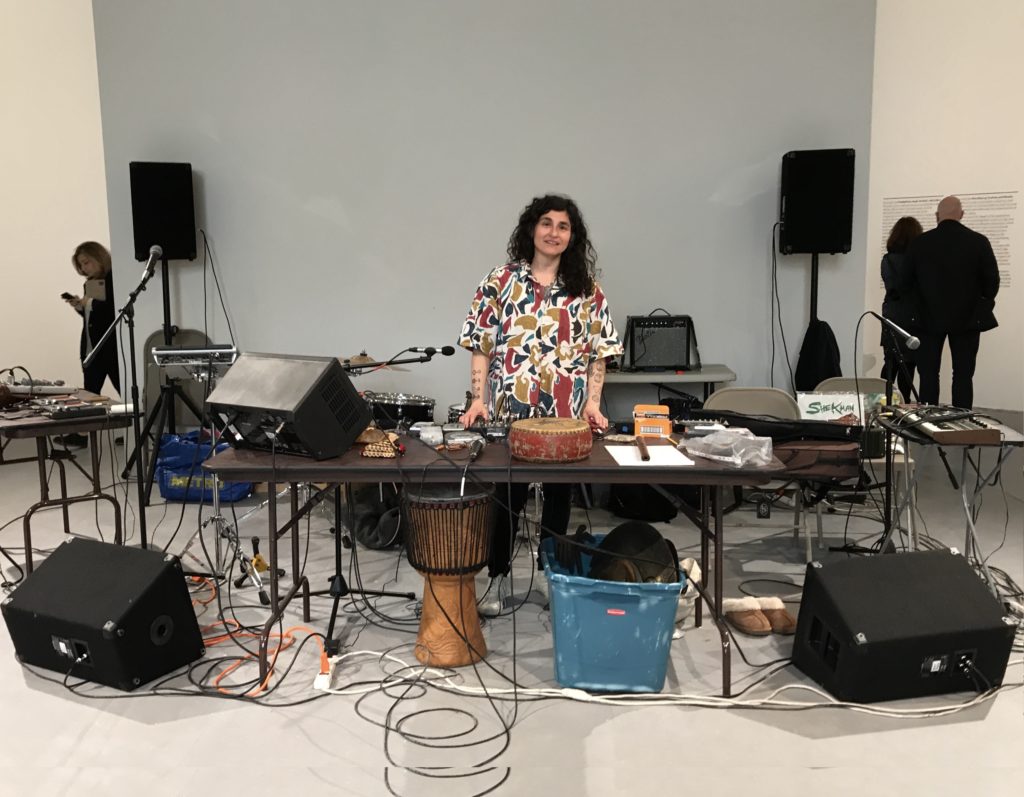
Immediately upon entering the Giardini portion of “Arte Viva Arte,” you find several artworks dedicated to artists sleeping or in other stages of active rest, ready to receive inspiration—the state of otium Macel describes as “a space of productive idleness and mind work.” Smack in the middle of these is the American artist Dawn Kasper, who Macel invited to reprise her performance This Could Be Something If I Let It from the 2012 Whitney Biennial, in which she set up her studio in that museum’s galleries for three months, making art and talking to the inquisitive visitors who stopped to chat. Since this is Venice, however, the piece (retitled The Sun, The Moon, and The Stars, and part of her ongoing project “The Nomadic Studio Practice”) has grown grander in the intervening five years: now, Kasper, whose once short hair has grown long and rangy, will be working inside the exhibition for six months. It’s also more complicated, considering that the artist needed to obtain a visa to work in Italy, which she describes as a “frustrating experience” that included so much paperwork she decided to incorporate it into her performance as a kind of research piece on the tribulations immigrants go through when researching visas.
On the Biennale’s opening day, Kasper was playing Bessie Smith’s “Empty Bed Blues” on her record player—“that starts out the day for me,” she says—and was full of nervous excitement about the project ahead. She had learned a few tricks from her Whitney stay, so this time she brought a whole box of extra chairs, a comfy couch, and a recliner that turns into a bed. Recording equipment is arrayed on tables around the large gallery she was given, and she hopes to record an album of new music with her bandmates Kelly Coates and Kathleen Kim, two Whitney collaborators who followed her to Venice (along with one of their boyfriends, who helpfully is a music producer), and also a solo album of her own compositions. A live performance in the space took place for VIPs the day before the opening, and “it’s sounding pretty well,” she says.
She’s also brought a slew of art supplies and photo-developing equipment, and is planning to hang the art she makes on the walls. “Some days I’m am going to stare at the wall and freak out about what I’m making,” she says, adding that the music helps her relax and “let go enough to let the work be what it wants to be.” In the meantime, Kasper—who is sleeping in an apartment a short walk away from the Biennale—is getting settled into her new environs. “It’s like a new lover—we’re trying to get to know each [other], me and this room,” she says. “I’m just trying to appreciate the experience.”
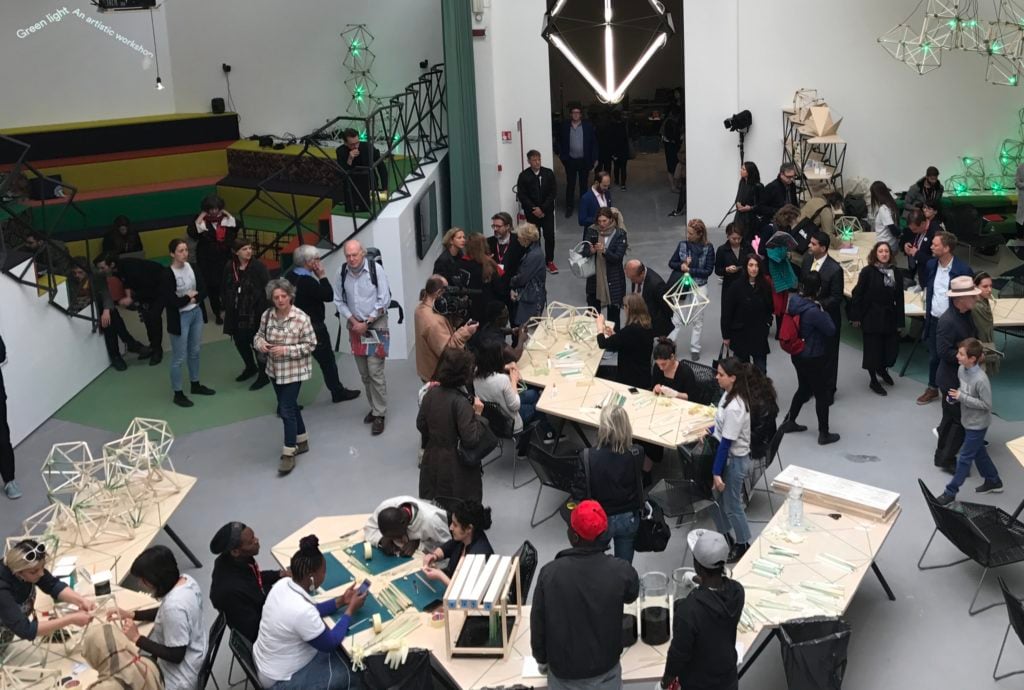
Just next door to Kasper’s cozy spread is another hive of activity set up by Studio Olafur Eliasson, bringing the Icelandic artist back once again to his now-familiar Biennale stomping grounds. Tables fill this room too, and at each one is a different station in the process of making a simple yet not inelegant polyhedron lantern with a green light that hangs from the ceiling and sits in stacks on the floor. One station tapes together sticks to make the form; another uses 3D printers to create the joints to keep them in place, etc. You can sit down and help make them with a group of friendly people, some of whom work for the studio, others of whom are asylum-seekers who have fled hardship in their native countries to come to Italy.
Meant to “address issues of forced migration,” according to studio manager Anna Engberg, the workshop is in fact a complex and ambitious project set up to help these asylum-seekers acclimate to life in Italy. Here’s the way it works. Collaborating with nine NGOs, the studio put out an open call seeking volunteers to help out in the workshop from the pools of migrants who had already passed through refugee camps. So far 40 have signed up, mainly from Nigeria but also from elsewhere in Africa, Iraq, Iran, Afghanistan, Syria, and two from China. Because the studio is prohibited from compensating these asylum-seekers financially, they provide them with meals—courtesy of the the studio’s famous kitchen, recently the subject of a Phaidon monograph—and also access to Italian-language classes, legal counseling, a psychologist, and a platform for creativity for any who want it. (One of the immigrants is a stand-up comedian, it turns out, while others are musicians and dancers.)
Once completed, the lamps—whose faint green lights are a classic symbol of hope, progress, and renewal—can be purchased by making a €250 (or higher) donation to one of two local charitable refugee organizations. Like the lamps, which can be combined to create different configurations, the workshop itself is intended to be modular and easily replicable. There are plans to bring it to other cities in the future, Engberg says.
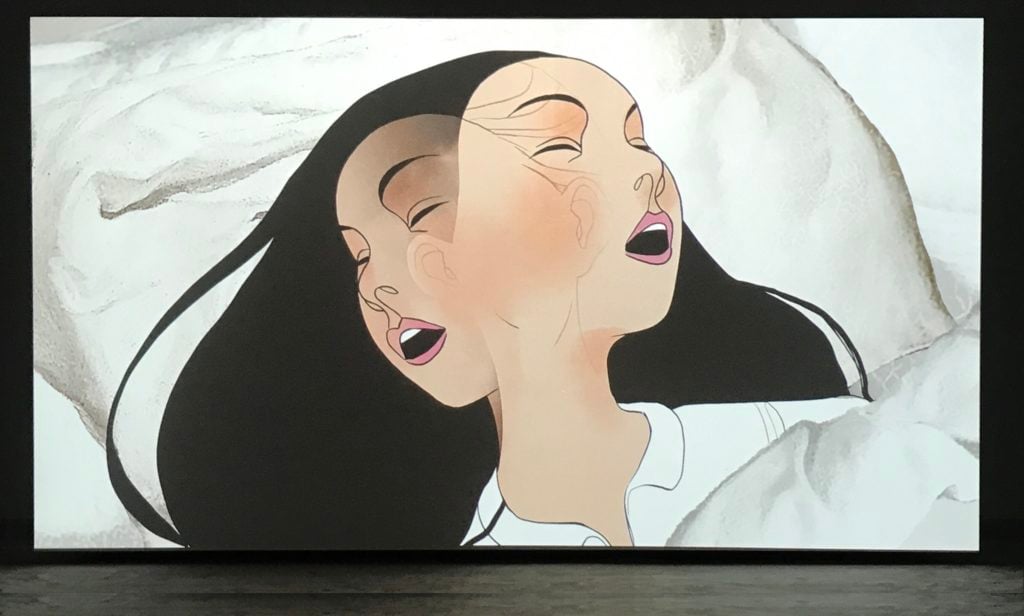
One of the greatest crowd-pleasers of “Arte Viva Arte” is this animated film by the young American art star Rachel Rose, which tells the story of a woman and (especially) her sweet little dog, who seem to share a kind of spiritual sympathy that flows across their sleeping and waking lives. Not much happens in the film—the woman goes to work, the dog runs out into the back yard and encounters a threatening fox, a gentle hedgehog, and other animals—but what does happen transpires in scenes of extraordinary, transfixing, psychedelic beauty. When the woman sleeps, she floats out of her body; when the dog ventures into the yard, she sees the natural world unfold in ravishing swaths of shape and color. (It may remind some of The Book of Kells, or the work of Hayao Miyazaki.) This is a film about ontology, imaging the different ways that we animals experience the world, and at eight-and-a-half-minutes long, it’s a must-see in its entirety for any visitor to the Giardini.
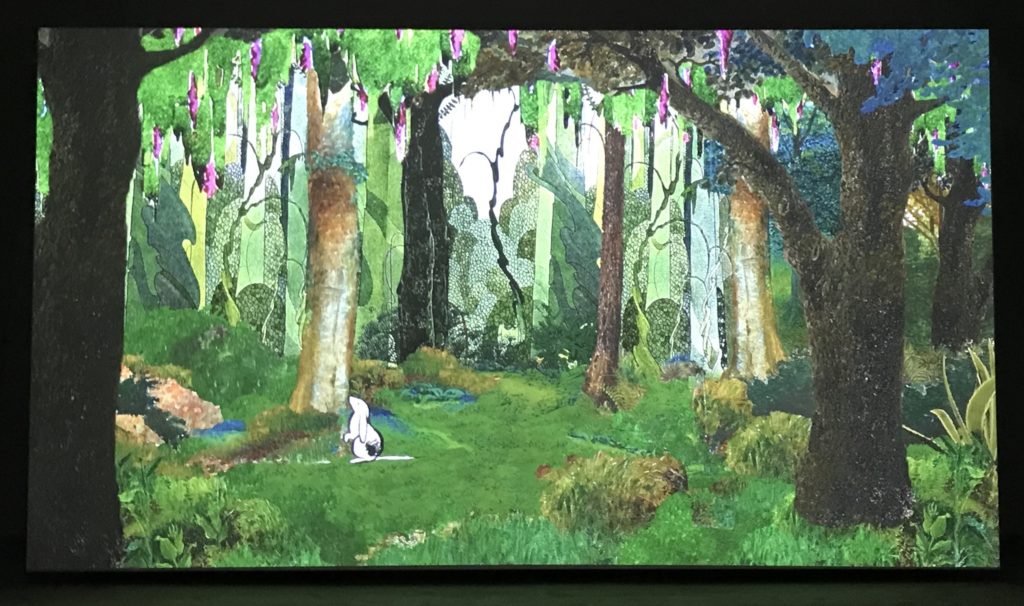
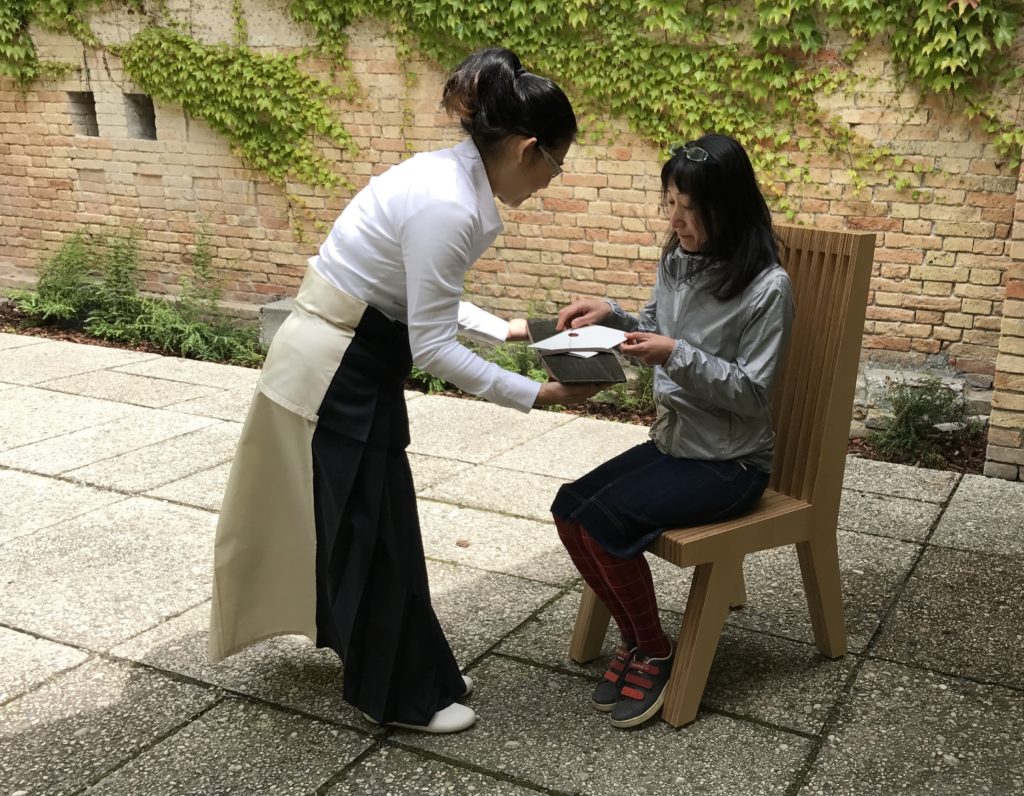
The little garden inside the Giardini is both an opportunity and a challenge for Biennale artists, since its meditative ambiance can either elevate a work or make it seem a bit silly. (Last time around, Sarah Lucas’s biomorphic sculptures looked stunning, but somehow the installation felt like it could have fit in a corporate lobby.) This year, Lee Mingwei hits the zen bulls-eye with an enchanting performance piece. When you enter the garden, you may see an empty chair with a stone atop its seat. A woman in a white robe appears, bells chiming around her ankles as she moves, and leads someone to sit down. She exchanges a few soft words of welcome, and then leaves. A moment later, she returns bearing a letter on a tray, the person takes it and departs, and the stone is again placed on the chair.
A Canadian woman who participated in the performance and happens to collect Mingwei’s work said that the robed performer was hired by the artist to enact the piece, and that she chooses whom to invite to the chair based on whether she feels a “special connection” with the person. When she gives them the letter, she tells them that it’s an artwork from the artist, and that they should open it “whenever beauty visits,” which could be in a day, a month, or a year. Mysterious and poetic, the performance slows down time—precisely the kind of experience one hopes for in a show like this.
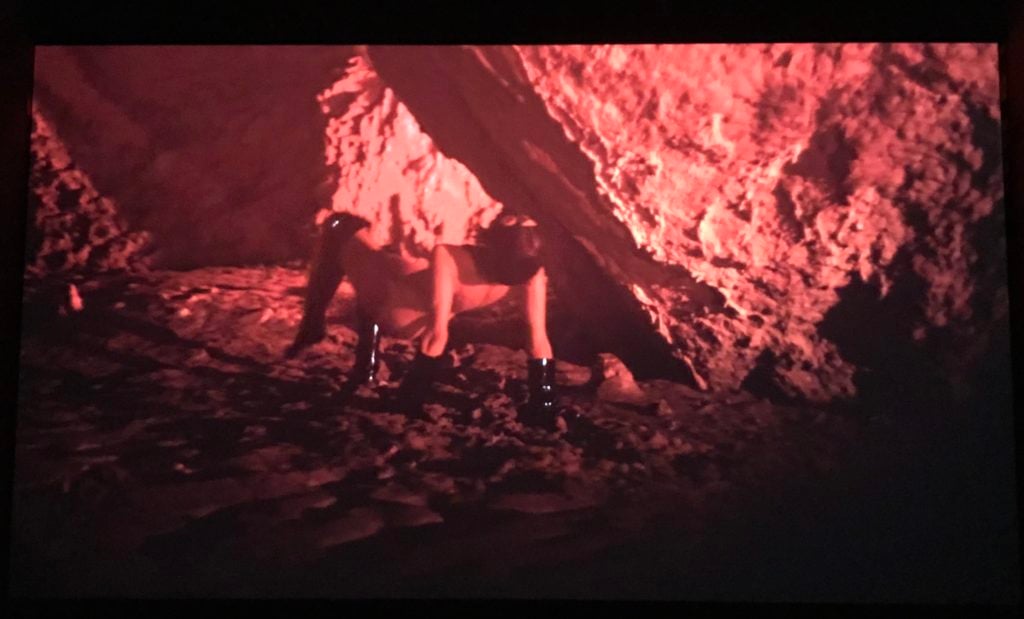
By far the weirdest contribution to this year’s Biennale, this film is also, a little surprisingly, one of the strongest. Shown inside a cavern-like screening room with a strange chthonic-looking hump to sit on, the film presents what seem like a string of linked vignettes. First, we may see some rock creatures being born in a cave, and then they dance a little Stravinsky-esque dance to an over-the-top waltz. The film then goes black-and-white, and a saintly woman walks up a hill and writhes on a rock while being seduced by a sleazy, pushy Jesus who appears in her midsection (“You love me and I love you,” he says, creepily). We return to the cave, where a bizarre scaley-armed woman creature yawps for a while, followed by the appearance of some goofy guys in spandex pretending to be ice cream. A figure with a strange distended white head observes all these goings on in a proprietary manner, like he’s a big deal in this cave. A naked woman of generous proportions does a kind of fertility dance. Another naked woman, this time apparently personifying death, crawls upside-down through the cave in a legitimately terrifying way; the end. Throughout, a choir of women’s voices sing and utter some vague profundities about where we all come from, and where we go. (“Death is a spider whose demented song will lead you from this world,” we learn.) It’s all a little goofy, but in fact very powerful, and its imaginatively rendered scenes worm into the memory despite their obvious debt to such filmmakers as Carl Theodor Dreyer, Kenneth Anger, and perhaps the evil geniuses behind the Ring movies. Expect to see more from this French-born artist.
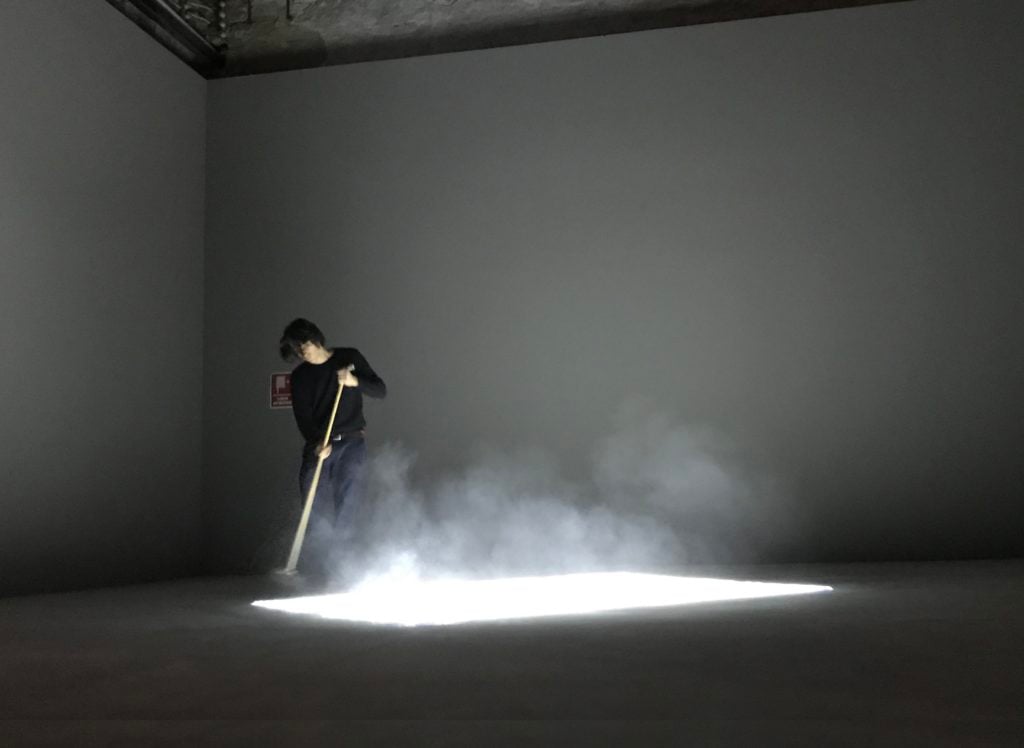
Just before the end of the Biennale, Christine Macel placed a little parting gift: a simple note of beauty to hold in your mind as you walk out of the show. (In fact, maybe just close your eyes while going through the well-worn Alicja Kwade installations that follow.) A man in black uses a broom to sweep together a carpet of dust perfectly framed by a rectangular spotlight. Some of the dust kicks up into the air, making small clouds. That’s it.